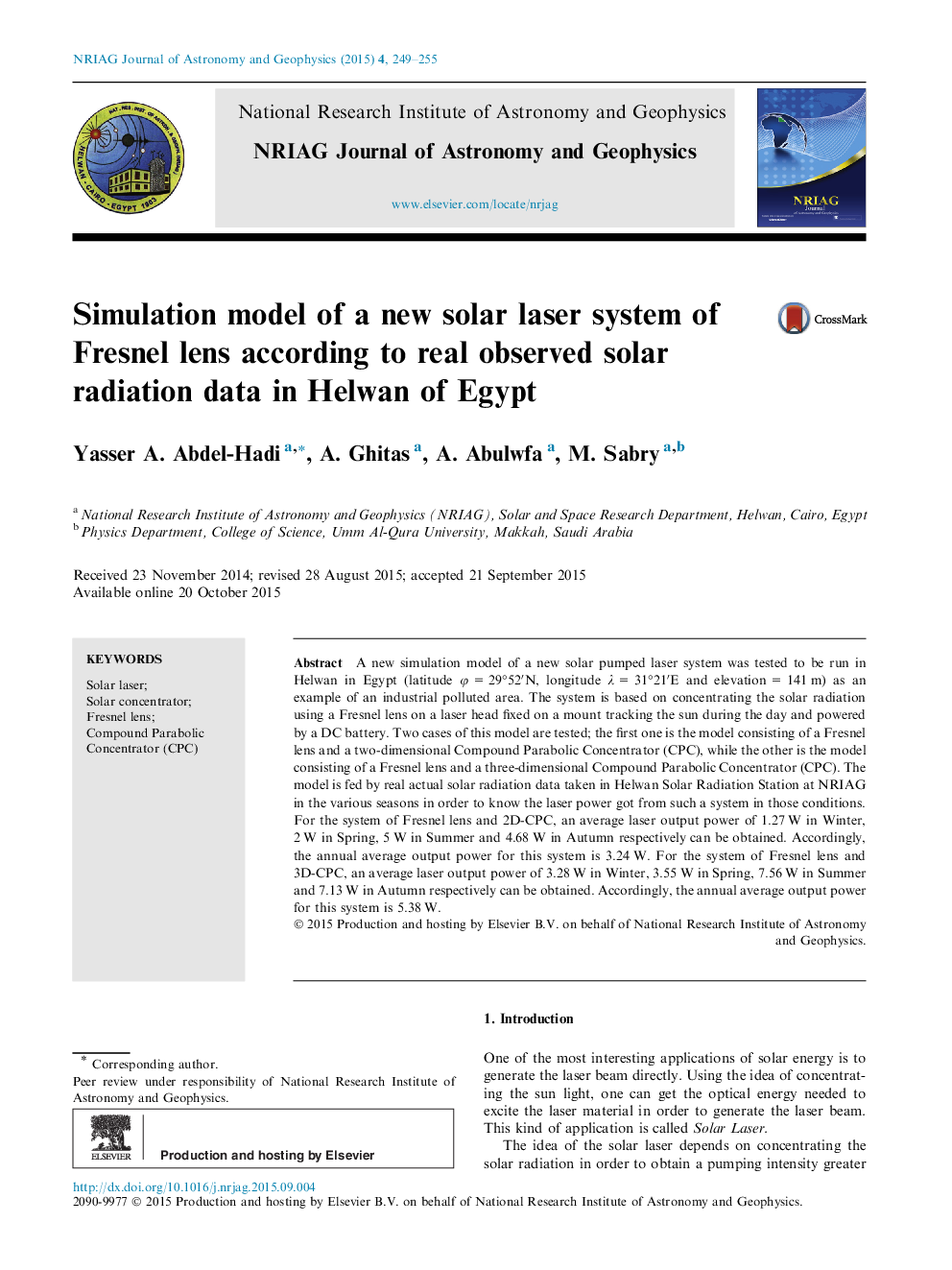| Article ID | Journal | Published Year | Pages | File Type |
|---|---|---|---|---|
| 1780582 | NRIAG Journal of Astronomy and Geophysics | 2015 | 7 Pages |
A new simulation model of a new solar pumped laser system was tested to be run in Helwan in Egypt (latitude φ = 29°52′N, longitude λ = 31°21′E and elevation = 141 m) as an example of an industrial polluted area. The system is based on concentrating the solar radiation using a Fresnel lens on a laser head fixed on a mount tracking the sun during the day and powered by a DC battery. Two cases of this model are tested; the first one is the model consisting of a Fresnel lens and a two-dimensional Compound Parabolic Concentrator (CPC), while the other is the model consisting of a Fresnel lens and a three-dimensional Compound Parabolic Concentrator (CPC). The model is fed by real actual solar radiation data taken in Helwan Solar Radiation Station at NRIAG in the various seasons in order to know the laser power got from such a system in those conditions. For the system of Fresnel lens and 2D-CPC, an average laser output power of 1.27 W in Winter, 2 W in Spring, 5 W in Summer and 4.68 W in Autumn respectively can be obtained. Accordingly, the annual average output power for this system is 3.24 W. For the system of Fresnel lens and 3D-CPC, an average laser output power of 3.28 W in Winter, 3.55 W in Spring, 7.56 W in Summer and 7.13 W in Autumn respectively can be obtained. Accordingly, the annual average output power for this system is 5.38 W.
